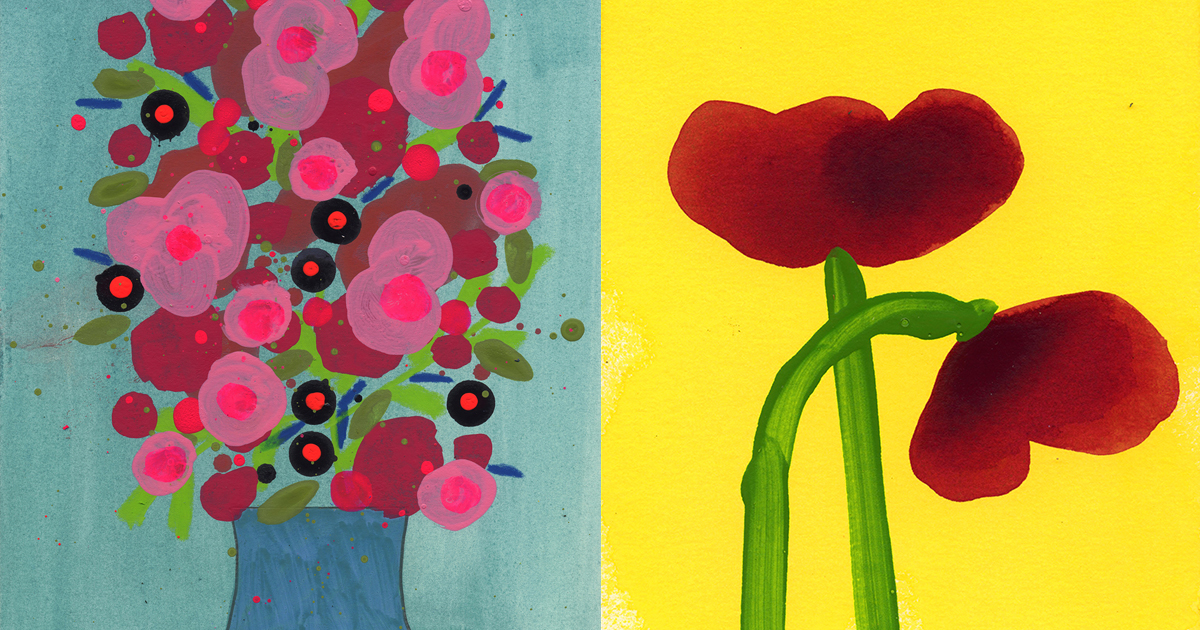
“To be a Flower is profound Responsibility,” Emily Dickinson wrote.
From the moment she pressed the first wildflower into her astonishing teenage herbarium until the moment Susan pinned a violet to her alabaster chest in the casket, she filled her poems with flowers and made of them a lexicon of feeling, part code language and part blueprint to the secret chambers of the heart.
The symbolic language of flowers peaked in Dickinson’s time, seeded by Erasmus Darwin’s radical romantic botany a century earlier and popularized by books like The Moral of Flowers, but humans have long heavied flowers with the responsibility of holding what we cannot hold, saying what we cannot say — the funeral wreath, the bridal bouquet, Georgia O’Keefe’s calla lilies channeling the divine feminine, the white hyacinth Rachel Carson and Dorothy Freeman made the emblem of their uncommon love. We need flowers for the same reason we need poems, or paintings, or songs — because what we can feel will always be infinitely vaster and more complex than what we can name, because words will always break under the weight of the immensities we task them with carrying, will never fully answer the soul’s cry for connection, for consolation, for mercy.

Artist Tucker Nichols was in his late twenties when he found himself in a strange hospital room in a strange city with a strange diagnosis that confounded even his doctors. Nobody knew what to say. Nobody knew how to make it okay. As he fumbled his way to remission, he was saved again and again by the power of human connection, by the many languages of solidarity and sympathy when words fall short.
Half a lifetime later, as the pandemic swept the globe with its tidal force of terror and uncertainty, Nichols drew on that experience in a tender gesture of sympathy: He began sending small flower paintings to sick people on behalf of their loved ones. (I am thinking of Walt Whitman and his Civil War hospital visits, writing letters and poems on behalf of wounded and dying soldiers.) He painted for friends, for friends of friends, for strangers. His wife and daughter helped mail the paintings.


As word spread of his project, these intimate and specific consolations began to feel unequal to the scale of suffering — we so easily forget that everyone is suffering in one way or another, often invisibly, always ultimately alone — and so he began painting flowers for entire categories of human experience ranging from the depths of despair to those quiet joys that make life livable.
The result is Flowers for Things I Don’t Know How to Say (public library) — a floral counterpart to The Dictionary of Obscure Sorrows, radiating the recognition that no matter how singular what we feel may seem, and how lonely in its singularity, it is just a garden variety feeling, felt by innumerable others since the dawn of feeling, being felt by someone somewhere right now. Out of that recognition unspool the golden threads of connection that bind us to each other and hammock the free-fall of our fear, our uncertainty, our loneliness.





His paintings, loose and bright, become analogues of how abstract yet vivid the most interior experiences are — amorphous shapes saturated with feeling, blurry arrangements of contrasting parts of the self.





Complement Flowers for Things I Don’t Know How to Say with the story of how the evolution of flowers gave Earth its language of love, then revisit The Dictionary of Obscure Sorrows.
Art © Tucker Nichols courtesy of Chronicle Books
Discover more from reviewer4you.com
Subscribe to get the latest posts to your email.










